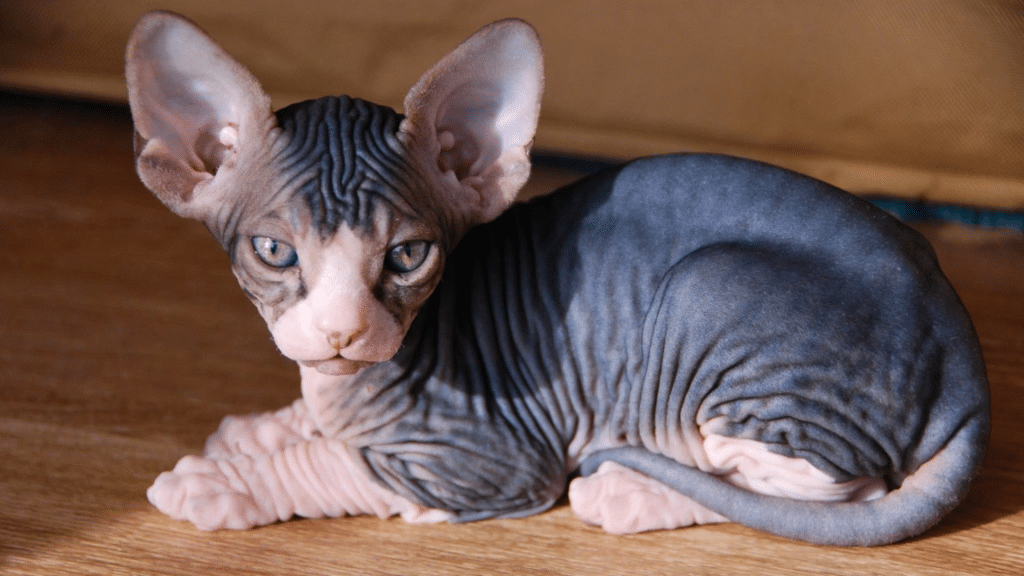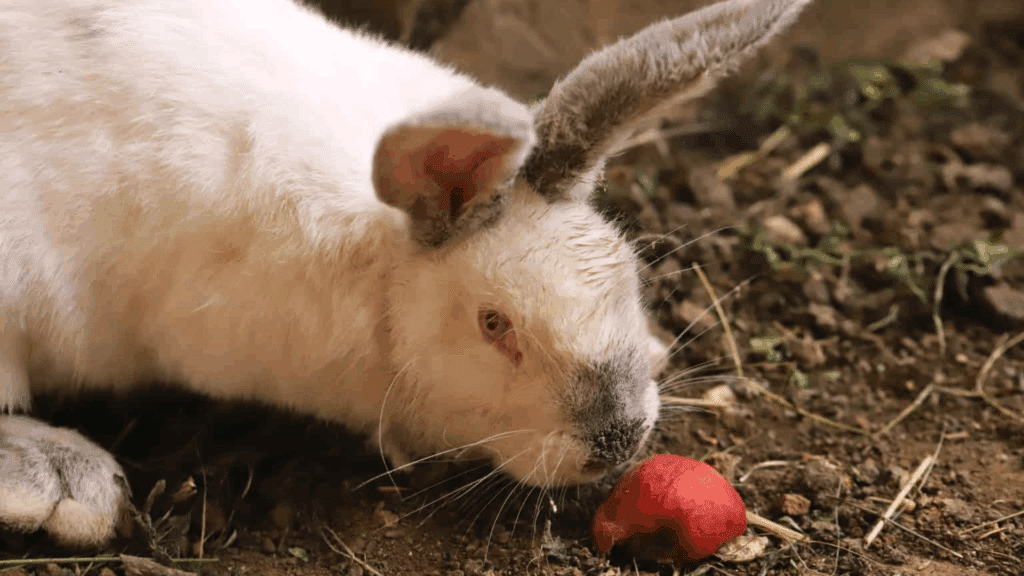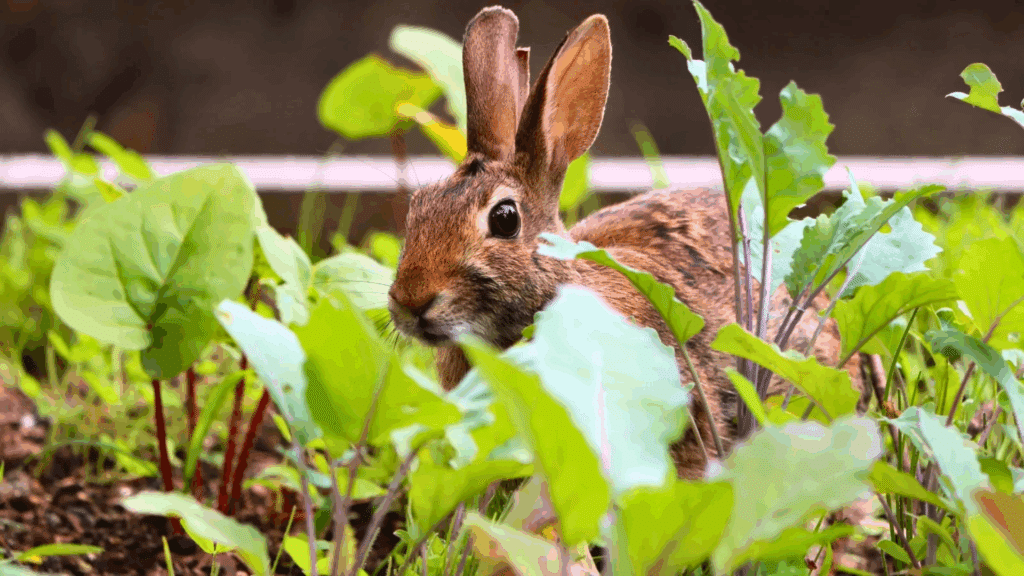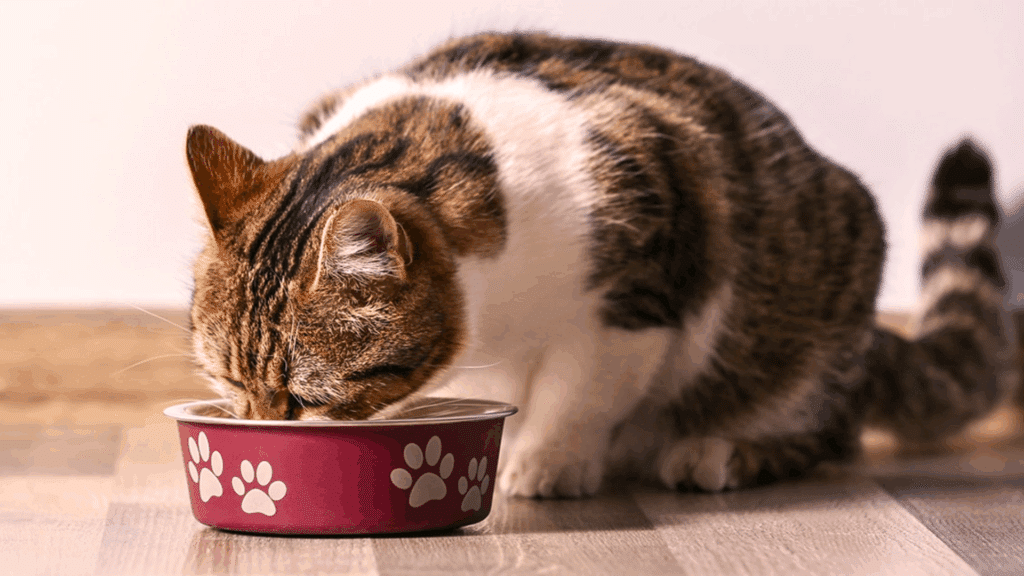Planning to bring home a Sphynx cat and ready to take care of this unique companion? These hairless beauties are known for their warm skin, loving nature, and curious personality.
I’ve always found Sphynx cats cute because they blend style, playfulness, and deep affection.
Their lack of fur makes them stand out, but it also means they need special attention to stay healthy and happy. From warmth and grooming to diet and daily bonding, caring for a Sphynx requires commitment and love.
In this guide, I’ll be telling you everything you need to know about Sphynx cat care, including their needs, health, and what to expect before adopting one.
If you’re planning to adopt your first Sphynx or simply learning about them, this guide will help you make the right decision.
Sphynx Breed Overview & History
The Sphynx is a hairless cat breed known for its warm skin, playful nature, and love of human attention.
Its skin feels like soft suede and shows natural wrinkles that give it a unique look. Despite having little or no fur, the Sphynx is lively, curious, and always looking for interaction.
This breed began in the 1960s in Canada when a natural genetic change caused kittens to be born without fur. Breeders worked carefully to develop healthy, strong, and friendly cats with this special appearance.
Today, the Sphynx is admired for both its looks and its affectionate personality.
| Trait | Detail |
|---|---|
| Origin | Canada, 1960s mutation |
| Attention Required | High (skin care, warmth, social time) |
| Grooming Frequency | Regular baths every 1–3 weeks; daily facial wipes |
| Temperament | Very social, vocal, people-oriented |
| Lifespan | About 12–15 years |
| Socialization Level | High; enjoys humans and pets |
| Size | Medium, muscular build |
The Sphynx thrives on warmth, gentle care, and daily engagement, rewarding its owner with endless affection and playful companionship.
Health Considerations for Sphynx Cats

Sphynx cats require regular veterinary care due to their unique skin and metabolism. Routine wellness checks should be scheduled at least once a year for adults and more often for seniors.
Skin and Routine Care: During these visits, discuss skin health, including risks of acne, dermatitis, or mild infections. A veterinarian can recommend suitable cleansers, bathing routines, and gentle products for your cat’s specific needs. Daily observation of skin folds is also important to spot redness, odor, or discharge early.
Monitoring Health: Keep an eye on your cat’s breathing, appetite, and activity level. Sudden changes can indicate respiratory or heart issues, which should be checked promptly.
Preventive Care: Maintain vaccination schedules, parasite prevention, and dental care to support overall well-being. Yearly or bi-yearly blood tests can detect organ issues early.
Daily Essentials Breakdown of a Sphynx
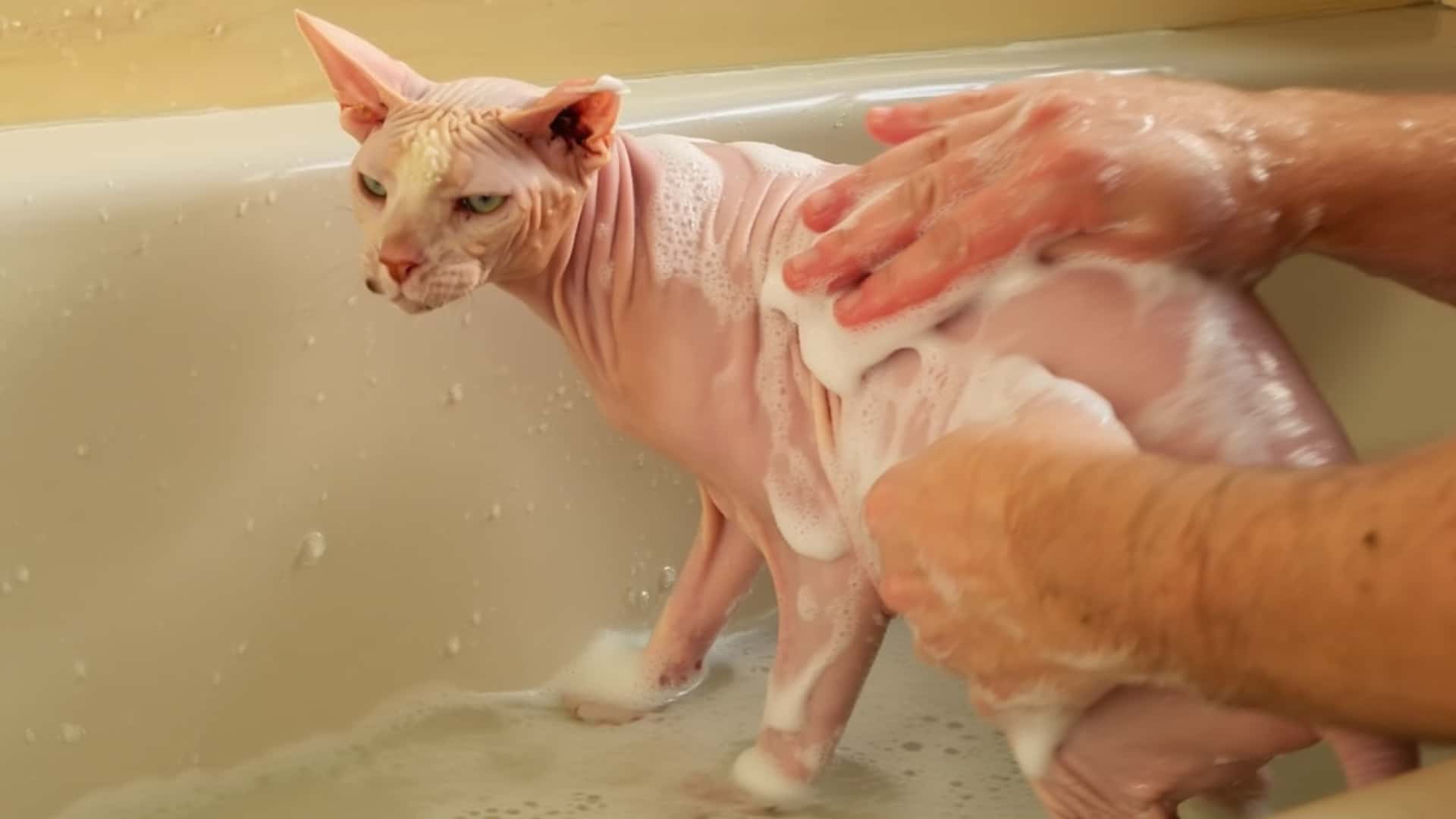
Caring for a Sphynx cat requires a few simple but consistent daily habits.
| Category | Daily / Regular Task | Details & Tips |
|---|---|---|
| Bathing | Gentle bath every 1–3 weeks | Removes oil buildup since there’s no fur to absorb natural oils. Use vet-approved shampoos for sensitive skin. |
| Feeding | Maintain a steady feeding schedule | Provide a protein-rich diet to support their higher metabolism and energy needs. |
| Hydration | Fresh water available at all times | Helps with digestion, hydration, and overall skin health. |
| Grooming | Check ears, nails, and skin folds daily | Look for dirt, oil, or irritation. Gently clean folds to prevent buildup and infection. |
| Affection & Interaction | Spend time daily | Regular attention keeps your Sphynx emotionally balanced and strengthens your bond. |
A few minutes each day for grooming, feeding, and affection helps your Sphynx stay clean, content, and well-balanced.
Exercise & Training Requirements for a Sphynx
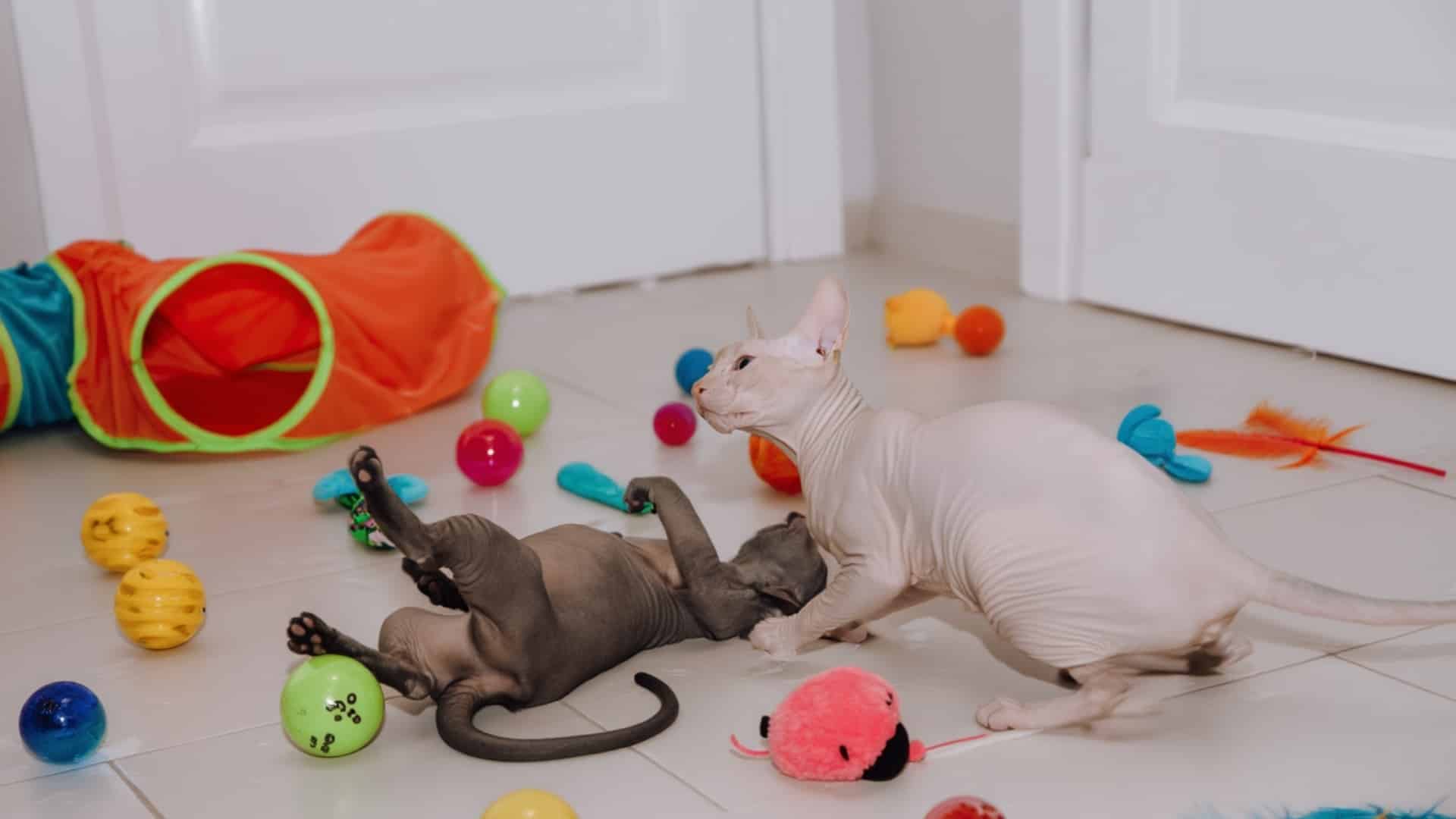
Sphynx cats are energetic, playful, and curious, so regular exercise helps keep them healthy and content. They love to climb, chase toys, and explore new spaces.
1. Daily Exercise
Provide daily play sessions to burn energy and prevent boredom. Use feather wands, puzzle feeders, or treat toys to engage both their body and mind.
Encourage climbing and jumping with cat trees or safe play furniture to strengthen muscles and coordination.
2. Training Basics
Keep training short and positive, about 5 to 15 minutes per session. Use treats and praise to reinforce good behavior and build trust. Start with simple goals like:
- Litter box manners
- Responding to their name
- Staying calm during grooming or handling
3. Approach and Mindset
Avoid harsh corrections or loud environments, as Sphynx cats are sensitive and emotional learners. Create a calm, rewarding atmosphere where your cat feels secure and encouraged.
4. Benefits of Routine Training
Regular play and gentle training help your Sphynx:
- Stay physically fit and mentally sharp
- Build confidence and reduce anxiety
- Strengthen your bond and improve overall behavior
Socialization and Behavior of Sphynx Cats

Sphynx cats are extremely social and affectionate animals that depend on interaction with their owners.
They love being around people and often follow family members from room to room.
Because they form strong bonds, leaving them alone for long hours can cause stress or boredom. Consistent companionship helps them stay emotionally balanced and confident.
Start socialization early by gently introducing your Sphynx to family members, friends, and other pets. Use treats, praise, and calm handling to build positive associations.
Gradual introductions create trust and prevent fear or aggression.
Well-socialized Sphynx cats show friendly, curious behavior and enjoy being part of household activities. If your cat becomes anxious or withdrawn, increase playtime and contact.
Proper socialization ensures a happy, secure, and well-adjusted companion.
Myths and Facts About Sphynx Cats
Many people misunderstand Sphynx cats because of their hairless look and special care needs. Let’s clear up some of the most common myths about this unique breed.
| Myth | Fact |
|---|---|
| Myth 1: Sphynx Cats Do Not Need Grooming | They need regular skin cleaning and gentle baths every one to three weeks to remove oil buildup and prevent irritation. |
| Myth 2: Sphynx Cats Are Hypoallergenic | No cat is completely allergy-free. Sphynx cats can still trigger allergies through skin flakes and saliva proteins, even without fur. |
| Myth 3: Sphynx Cats Are Always Cold | They enjoy warmth, but if your home is cozy and draft-free, they stay comfortable without needing constant clothing. |
| Myth 4: Sphynx Cats Are Unfriendly or Aggressive | When raised with love and social interaction, Sphynx cats are affectionate, gentle, and highly people-oriented. |
| Myth 5: Sphynx Cats Are Fragile Pets | Despite their delicate appearance, they are muscular, active, and adaptable with proper nutrition and warmth. |
Costs and Financial Considerations for Owning a Sphynx
Owning a Sphynx cat comes with both upfront and ongoing costs. Planning ahead helps you manage expenses and keep your cat healthy without financial stress.
1. Initial Costs (One-Time Expenses)
These are the first costs you’ll face when getting your Sphynx cat.
| Item | Estimated Cost (USD) | Notes |
|---|---|---|
| Adoption or Breeder Fee | $1,500–$3,000 | Breeders often charge higher prices due to the breed’s rarity and health testing. |
| Spaying or Neutering | $150–$400 | Usually done before adoption, but can be a separate cost. |
| Microchipping | $40–$60 | One-time fee for identification and safety. |
| Initial Vet Exam & Vaccinations | $100–$300 | Covers general health check and early shots. |
| Basic Supplies (bedding, litter box, carrier, food bowls) | $100–$200 | Starter items for your home setup. |
Average initial investment: Around $1,900 to $3,800.
2. Monthly Care Costs
These are ongoing expenses that keep your Sphynx comfortable and healthy.
| Category | Estimated Monthly Cost (USD) | Details |
|---|---|---|
| Food (high-quality diet) | $40–$70 | Choose protein-rich food for energy and healthy skin. |
| Grooming & Skin Care Products | $15–$30 | Includes gentle shampoos, wipes, and moisturizers. |
| Litter & Cleaning Supplies | $20–$30 | Odor-control litter and cleaning products for hygiene. |
| Warm Bedding & Clothing | $10–$20 | Especially important in cooler months. |
| Routine Veterinary Care (averaged monthly) | $25–$50 | Covers regular exams, vaccines, and dental maintenance. |
| Pet Insurance (optional but recommended) | $30–$60 | Helps with unexpected medical expenses. |
Average monthly cost: Around $140 to $260.
3. Yearly or Unexpected Costs
Even with good care, surprise expenses can arise.
| Expense Type | Estimated Cost (USD) | Examples |
|---|---|---|
| Emergency Vet Visits | $300–$1,000+ | Illness, injury, or sudden skin infections. |
| Dental Cleanings | $200–$500 per visit | Sphynx cats often need regular dental care. |
| Replacement Supplies | $50–$150 | New bedding, collars, or toys over time. |
Budgeting Tip: Setting aside a monthly emergency fund of around $30–$50 can make vet bills or health surprises less stressful.
By understanding these costs in advance, you’ll be better prepared to give your Sphynx the consistent care, comfort, and attention it needs for a long, healthy life.
Advice to Potential Sphynx Cat Owners

If you are planning to bring home a Sphynx cat, preparation and awareness are essential. These cats are charming, affectionate, and lively, but they require more care than most breeds.
Before adopting, take time to understand their needs and how they fit into your lifestyle.
Tips for future Sphynx owners:
- Create a warm, comfortable space with blankets or heated beds for your cat to rest.
- Use gentle, vet-approved cleansers for skin care and set a bathing schedule that suits your cat’s needs.
- Feed a high-quality, protein-rich diet to support energy and metabolism.
- Plan daily playtime and social interaction to prevent boredom or stress.
- Keep up with regular vet visits, parasite prevention, and dental care.
- Budget for grooming products, warm clothing, and possible skin treatments.
Caring for a Sphynx cat is rewarding for owners who value close companionship and daily interaction. With proper planning and love, your Sphynx will become a loyal and joyful family member.
Conclusion
Caring for a Sphynx cat is a beauty, filled with warmth, affection, and daily companionship.
These cats love people, thrive on attention, and reward care with complete affection. I truly believe owning one teaches you patience, gentleness, and responsibility.
The Sphynx’s hairless body means more grooming and warmth management, but every bit of effort returns as love and loyalty.
If you are planning to adopt one, prepare your home, your time, and your heart for a playful, social, and intelligent friend.
By understanding their needs and staying consistent with care, you can enjoy a strong bond that lasts for years.
What names have you planned for your new kitty? Tell us in the comments below!


